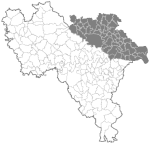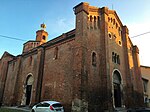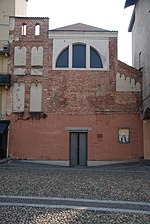Civic Tower (Pavia)

The Civic Tower (Italian: Torre Civica) was built in the Italian city of Pavia in the 11th century, next to Pavia Cathedral. Built to a rectangular footprint, it was 72 metres (236 feet) high.Between 1583 and 1585 the architect Pellegrino Tibaldi led works to add a room at the top of the tower to house the cathedral's bells, which it did until it was moved to a campanile of the cathedral.On 17 March 1989, at 8:55 a.m., the Civic Tower collapsed, leaving 8,000 cubic metres (280,000 cubic feet) of brick, sand and granite rubble. The collapse killed four people and injured fifteen. It has not been rebuilt, though some elements from it are now on display at the city's Castello Visconteo.After the tower's collapse, the Italian government closed the Leaning Tower of Pisa on 7 January 1990 over concerns that the popular tourist site might also be at risk of collapse.
Excerpt from the Wikipedia article Civic Tower (Pavia) (License: CC BY-SA 3.0, Authors, Images).Civic Tower (Pavia)
Piazza Duomo, Pavia Borgo Ticino
Geographical coordinates (GPS) Address Nearby Places Show on map
Geographical coordinates (GPS)
| Latitude | Longitude |
|---|---|
| N 45.185 ° | E 9.1527777777778 ° |
Address
Piazza Duomo 2
27100 Pavia, Borgo Ticino
Lombardy, Italy
Open on Google Maps










